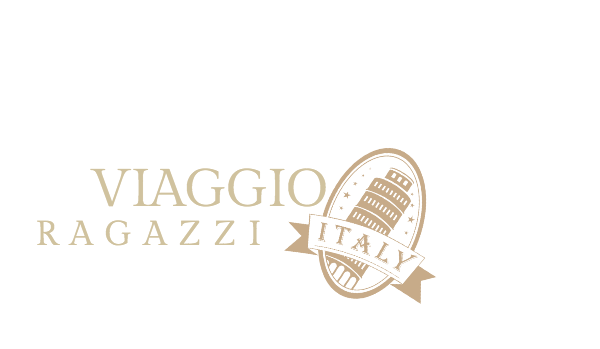When looking and thinking of Florence, the image of the stunning Ponte Vecchio, directly translated into “old bridge”, immediately comes to mind. This iconic bridge, spanning the Arno River, is a true masterpiece of architecture and holds a significant place in history. The Ponte Vecchio is not just a means to cross the river; it is a symbol of Florence’s rich heritage, cultural significance, and artistic prowess.
History and Architecture of the Ponte Vecchio
Dating back to Roman times, the Ponte Vecchio has a fascinating historical background. It was first built during ancient times, but the bridge we see today is a result of restoration work carried out after a devastating flood in 1345. Over the centuries, it has survived wars, floods, and even attempts of destruction, emerging as a resilient symbol of Florence’s history.
The architecture and design of Ponte Vecchio are truly remarkable. Unlike other bridges, it is characterised by a series of shops lining both sides, giving it a unique appearance. The bridge consists of three segmental arches supported by stone piers, with the shops suspended over the water. The mediaeval architecture, combined with the vibrant colours of the buildings, creates a picturesque scene that attracts visitors from all over the world.
Ponte Vecchio holds great significance as a symbol of Florence. It represents the city’s resilience, architectural excellence, and the harmonious blending of history and modernity. Walking across the bridge feels like stepping back in time, with each step immersing you in the rich tapestry of Florence’s past
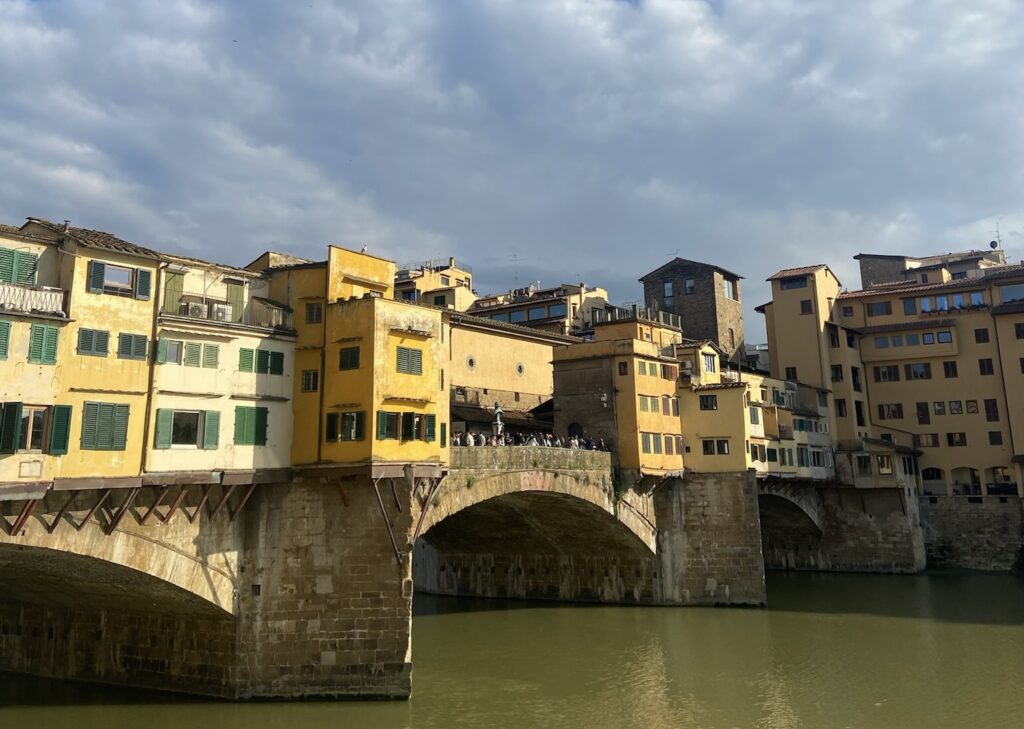
Restorations and Cultural Significance of the Ponte Vecchio
Over the years, Ponte Vecchio has undergone several restoration and preservation efforts to maintain its structural integrity and historical charm. The Ponte Vecchio was the only bridge in Florence not damaged during the German retreat at the advance of the British 8th Army on 4 August 1944 during the second world war; it is said by many locals that this is because of an express order by Hiter. However, access to the Ponte Vecchio was obstructed by the destruction of the buildings at both ends of the bridge. These have since been rebuilt using a combination of original and modern designs. The bridge was also severely damaged during the floods of the Arno in 1966. These endeavours ensure that future generations can continue to admire and appreciate the bridge’s beauty and historical significance.
Ponte Vecchio has deep cultural significance for the people of Florence. It is the oldest bridge in Florence and a place where the people come together to celebrate various traditions and festivities. From historic processions to lively music performances, the bridge serves as a cultural hub, fostering a sense of community and connection.
Shops and Jewellery at the Ponte Vecchio
One of the most intriguing aspects of Ponte Vecchio is the collection of famous shops that adorn the bridge. These shops have a long-standing tradition of selling exquisite jewellery, art, and souvenirs. Visitors can explore these unique establishments, each with its own captivating story and artisanal offerings
Ponte Vecchio is renowned for its vibrant art and jewellery scene. The shops on the bridge showcase the talent of local artisans, offering a wide range of handcrafted pieces. From dazzling gold jewellery to intricate paintings, visitors can find extraordinary treasures that capture the essence of Florence’s artistic heritage.
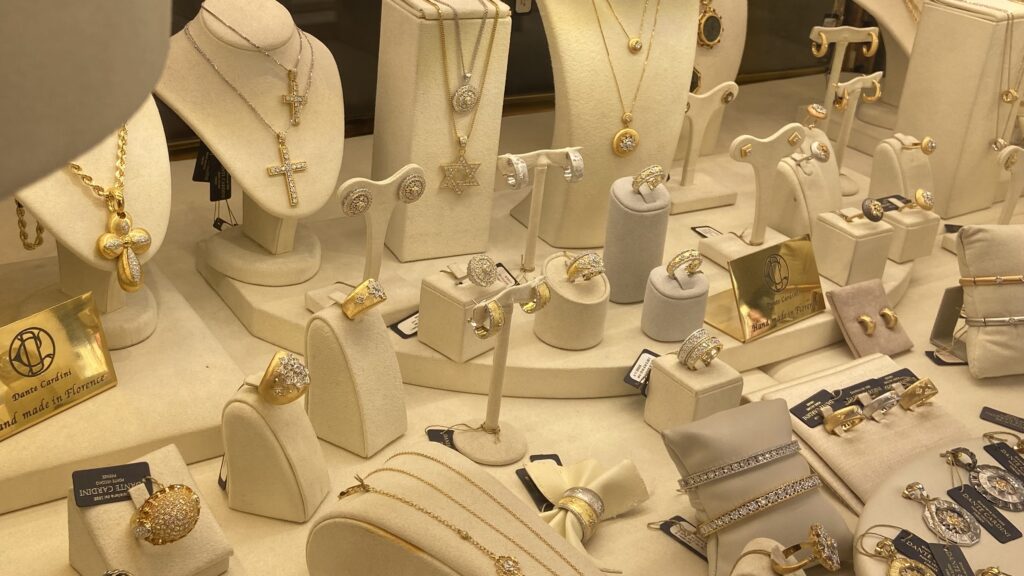
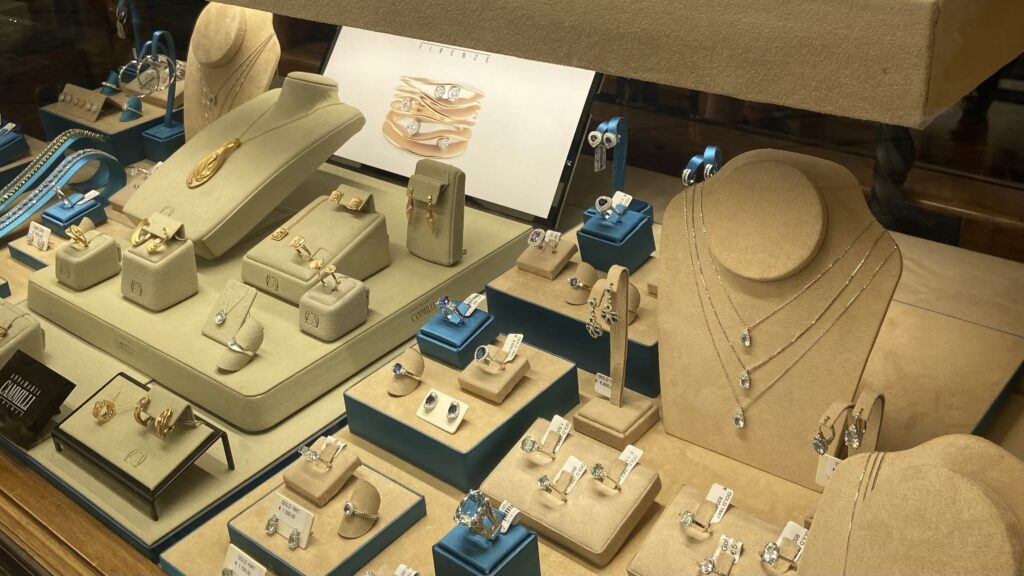
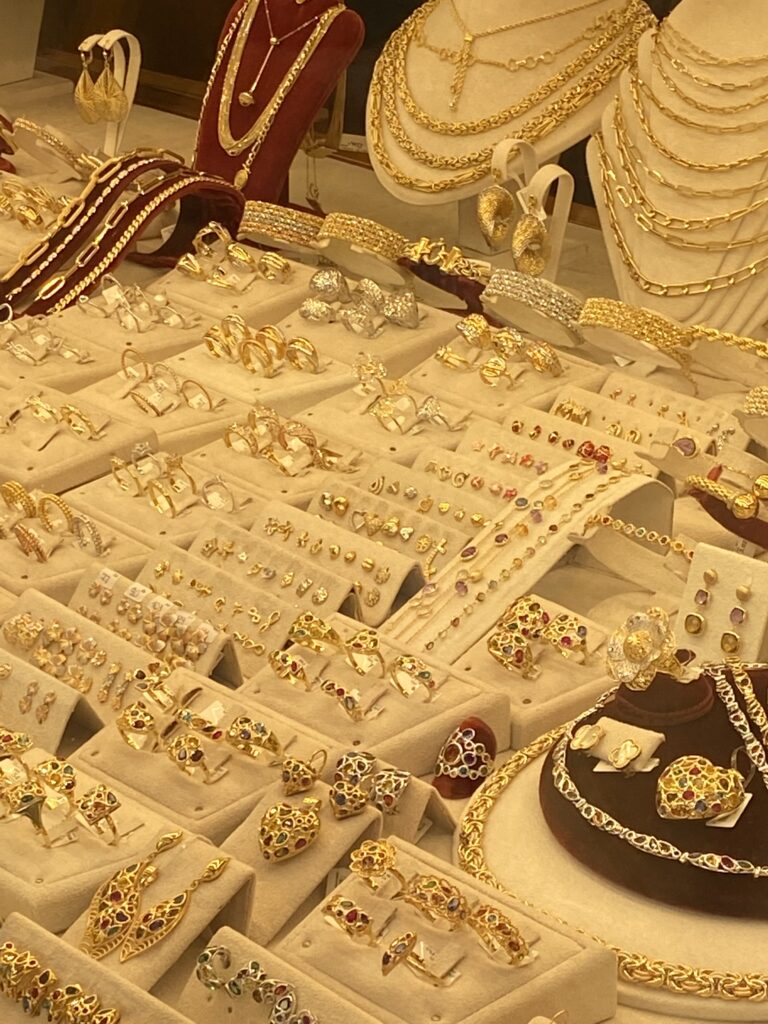
Attractions close to the Ponte Vecchio
While Ponte Vecchio is undoubtedly a highlight, the surrounding area is also worth exploring. Take a leisurely walk along the Arno River, visit the nearby Piazza della Signoria, or venture into the charming streets of Florence to discover hidden gems, delightful cafes, and artisanal boutiques. Close to the old bridge you can also explore the Uffizi, so combining the trip to both of these cultural gems might be convenient.
The bridges in Florence
Undoubtedly the most famous bridge in Florence is the Ponte Vecchio. But in Florence you can also find Ponte Santa Trinita which is regarded as one of the finest examples of Renaissance architecture, and is a sight to behold. Designed by renowned architect Bartolomeo Ammannati, this bridge showcases harmonious proportions and elegant curves. Destroyed during World War II and painstakingly reconstructed, Ponte Santa Trinita now stands as a testament to the resilience and determination of the Florentine people.
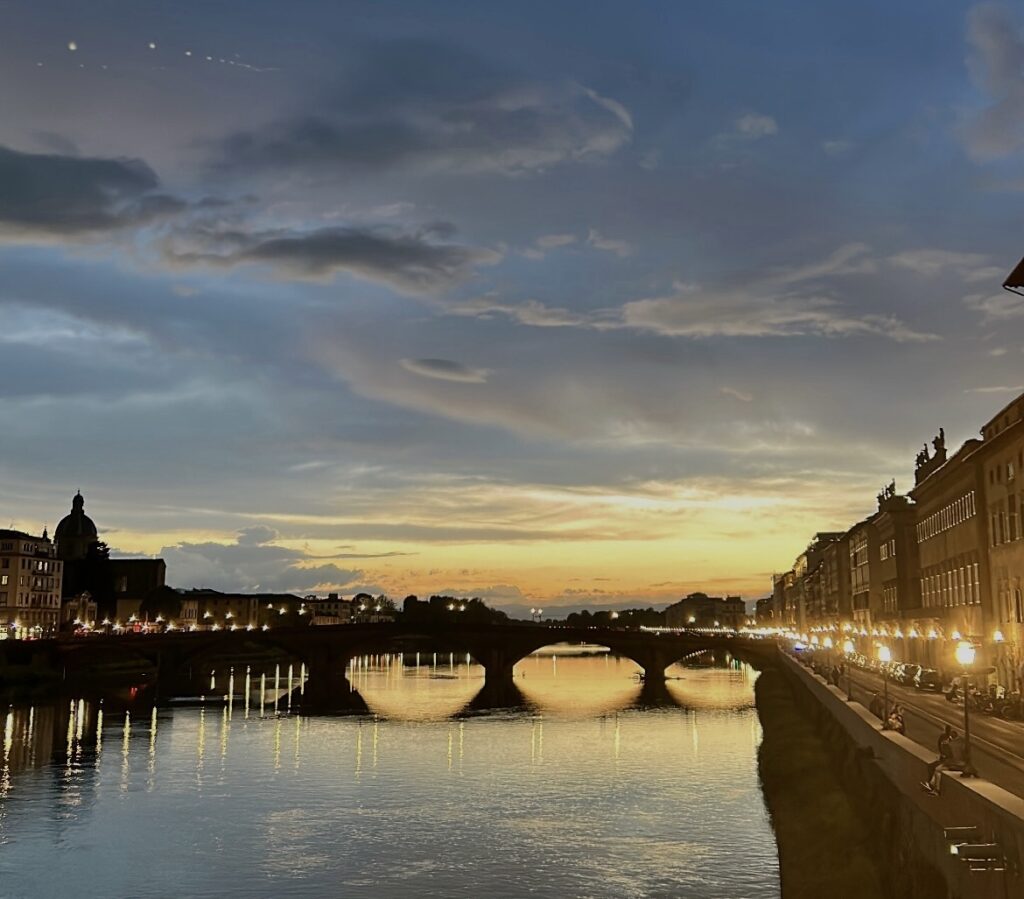
FAQs
- Can I cross the Ponte Vecchio on foot?
– Yes, pedestrians can walk across the bridge and explore the shops. - Are the shops on the Ponte Vecchio expensive?
– Most of the shops offer high-end jewelry and art and are rather expensive, but there are also more affordable options available. - Are there any restrictions for visiting Ponte Vecchio?
– While there are no specific restrictions, it is recommended to follow the local guidelines and respect the historical significance of the bridge.
Other Tips for Ponte Vecchio:
- Be careful to not step on the paintings laid out on the ground, a common tourist scam.
- It is very nice to watch the sunset from Ponte Santa Trinita because the Ponte Vecchio will be in the most amazing light and it is nicer to take photos of the bridge from there.
